As a petrophysicist, I engage with well log patterns, discern their underlying trends, and then transform these intricate patterns into scientifically quantifiable reservoir insights.
It's not an art form; it's not conjuring. It's pure science.
This journey commenced a decade ago, catalyzed by my first mentor, Ko Ko Kyi. He instilled in me the art of deciphering well logs and extrapolating meaningful interpretations.
After nearly ten years of unraveling and decoding well logs extracted from diverse reservoirs across the globe, I confidently affirm that the principles Ko Ko imparted still hold steadfast, particularly for pristine sandstone and carbonate reservoirs. While for intricate or unconventional reservoirs, applicability may sway.
These well logs serve as my daily compass, providing a foundational reference for all quantitative petrophysical evaluations.
Today, I'm eager to unveil how you can expeditiously interpret a well log, merely by perceiving the distinctive well log patterns. I term this technique "The Ko Ko Rules."
This approach isn't laden with embellishments, nor does it warrant a patent. It's a logical, systematic pathway to unravel any well log's intricacies. Yet, the outcomes are enchanting.
And I'm certain that this approach will prove invaluable to you.
Enter 'The Ko Ko Rules'
What you need:
1. Plot triple combo logs in this sequence GR, Resistivity, Density-Neutron. Plot GR in the first track and Resistivity in the second track. Both curves should be plotted in increasing values from the left to the right. Plot Density-Neutron together on the same track. The values should be decreasing as we go from the left to the right.
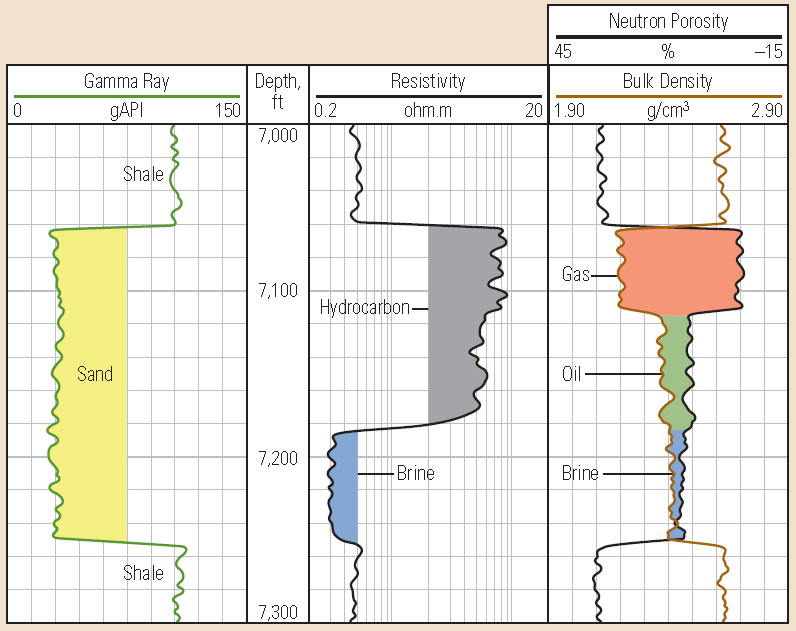
2. Plot Density-Neutron in lithology compatible scale: Sandstone or Limestone scales. We will be able to tell the reservoir types, the fluid types and estimate porosity right away. For example, this is Density-Neutron scale for sandstone.
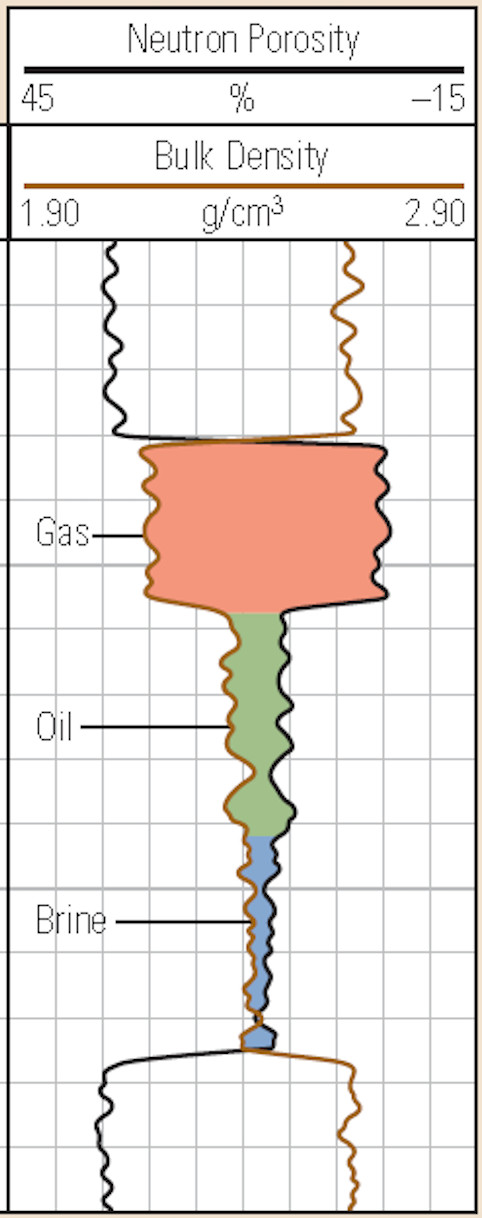
3. Look at the directions of GR, Resistivity, Density and Neutron curves deflections, either to the right or to the left.
4. By combinating the patterns of each curve deflections, we can tell the difference between reservoir and non reservoir and/or the fluid types (oil vs gas vs water).
Follow the Ko Ko Rules:
1. Look at the directions of the curve deflections (whether to the right or to the left) in these following sequence: GR-Res-Density-Neutron.
1. Tight non-reservoir: Right-Right-Right-Right. GR-Res-Density-Neutron all deflect to the right. Why it works: If we are not in a reservoir zone, GR is higher due to larger natural radioactivity from U, Th, K contents. Resistivity is higher due to tightness. Density and Neutron read low porosity.

2. Shale: Right-Right-Right-Left.
GR, Res-Den deflect to the right. Only Neutron deflects to the left.
Why it works: GR is higher due to larger natural radioactivity from U, Th, K contents. Resistivity is higher due to tightness. Density read low porosity. Neutron falsely responds to the clay bound water resulting to higher apparent porosity. You will see a reversed Density-Neutron crossover.
Sometimes, the resistivity could deflect to the left as well, depending on the properties of the shale itself. So it could read, Right-Left-Right-Left.
Note: You might see a reversed Density-Neutron crossover in dolomite. Over a dolomitic zone, GR reads lower.

3. Low porosity (tight) reservoir: Left-Right-Right-Right.
GR deflects to the left, GR-Res-Density-Neutron deflect to the right.
Why it works: GR reads lower due to lower radioactivity of Th, K and U. Resistivity, Density-Neutron respond to the tightness of the reservoir (rock quality), rather than to the fluid types.
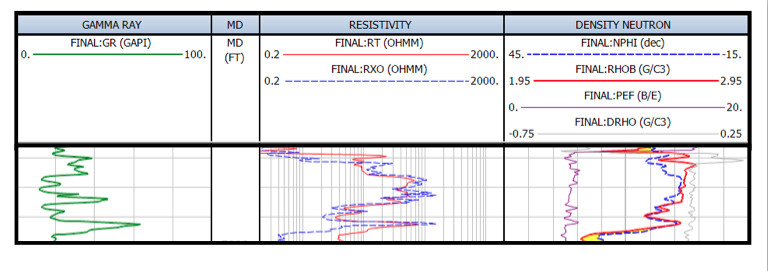
4. Water bearing reservoir: Left-Left-Left-Left.
GR-Res-Density-Neutron all deflect to the left.
Why it works: GR reads lower due to lower radioactivity of Th, K and U. Resistivity responds to saline formation water. Density-Neutron reads higher porosity in reservoir.

5. Oil bearing reservoir: Left-Right-Left-Left.
GR and Density-Neutron all deflect to the left. Only resistivity deflects to the right.
Why it works: GR reads lower due to lower radioactivity of Th, K and U. Resistivity responds to non conducive hydrocarbon, giving higher resistivity. Density-Neutron reads higher porosity in reservoir.
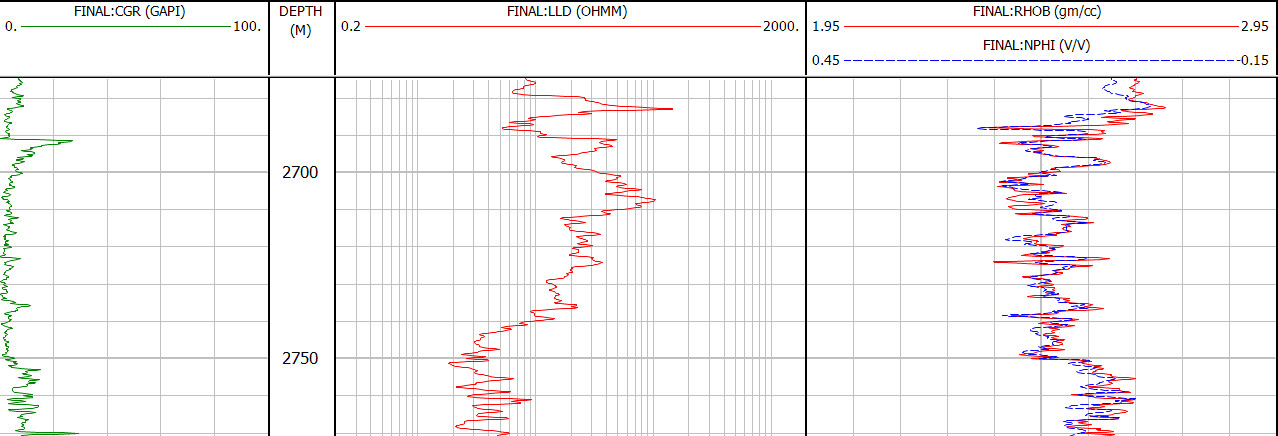
6. Gas reservoir: Left-Right-Left-Right.
GR deflects to the left; Resistivity, right; Density left; and Neutron, right.
Why it works: GR reads lower due to lower radioactivity of Th, K and U. Resistivity responds to non conducive hydrocarbon, giving higher resistivity. Density gives lower bulk density due to lower gas density. Neutron reads low apparent low porosity in gas zone due to lower neutron-hydrogen interactions in gas as compared to neutron-hydrogen interactions in water.
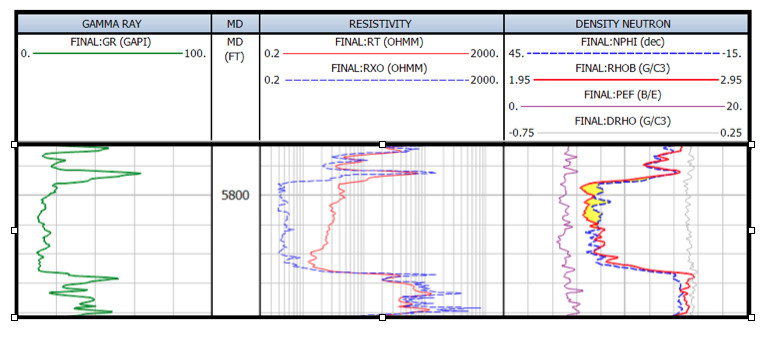
So, there you have it—the six Ko Ko Rules that guide well log interpretation.
Naturally, these rules aren't infallible; they stand as guiding principles rather than rigid laws. Just like gravity, which holds true on Earth but loses its grip in the expanse of space, these rules have their limitations. When they prove inadequate, it's best to let them fade into the background.
They might not hold sway over scenarios involving freshwater environments, low-resistivity pay zones, scorching sands, or the intricacies of unconventional reservoirs. Even for your next well a mere half-mile away, these rules might falter, as reservoir characteristics can undergo sudden shifts. This dynamic is simply a reflection of nature's unpredictable rhythm.
Nevertheless, they furnish a solid foundation for launching into well log evaluations.
The subsequent stride involves delving into the array of available log curves and additional well data, enabling you to undertake a comprehensive quantitative log analysis. It's at this juncture that petrophysics truly becomes captivating.
In any event, a hearty acknowledgment goes to Ko Ko—for these rules illuminate the path.

%20(1).png)



